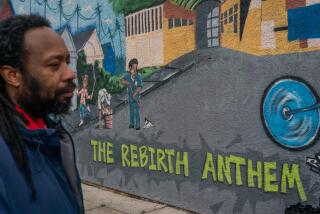Could ‘lean urbanism’ jump-start urban revitalization projects?

At what point does necessary regulation become unnecessary red tape? The answer lies in the eye of the beholder, but anyone who has ever dealt with an urban construction or major reconstruction project will argue that the line was crossed long ago.
Miami-based New Urbanism architect and planner Andrés Duany hopes to find a way to help cut through the tape with the concept of “lean urbanism.” Last month he picked up a $600,000 grant from the John S. and James L. Knight Foundation to explore the potential. It’s something worth watching.
The concept is to develop low-cost mechanisms to help project overseers figure out faster, more direct ways of progressing from concept to finished project without getting driven to drink or violence by municipal bureaucrats (overstating, yes, but revenge fantasies and the permitting process are pretty closely linked). Duany tied its usefulness to places such as Detroit:
Detroit, one of the communities where Knight Foundation invests, serves well as an example. Due to the city’s fiscal hardship, layers of red tape are being peeled away. There are in fact two Detroits. Sure, there are abandoned properties, but there are also people making something from them.
How is this revitalization happening? The old way, it seems, in that sequence that has always powered the cycle of cities: the unsanctioned activity of artists with a good eye, the penniless young people with a sense of adventure, and the small entrepreneurs who used to be called the bohemians. These were the pioneers of Greenwich Village in the 1920s, Miami Beach in the ’80s, and Brooklyn now. They are the first wave in a succession of actors who thrive below the horizon of bureaucratic control. They can be classified as risk-oblivious. Later, when the neighborhood is cool, come the risk-aware. These are the developers and business owners who secure proper permits and mortgages. Later yet, when it is obvious that the place is safe for investment, arrive the risk-averse — the gentrifiers called “the dentists from New Jersey.”
The Atlantic Cities’ Anthony Flint recently chatted with Duany and posted this overview:
“Common sense has been almost completely lost in my profession. There are too many protocols in the way,” says Duany, who was at MIT earlier this week. I caught up with him afterwards to inquire further about the rules and regulations and codes and requirements that he sees as flummoxing young people entering the design professions or seeking to do smaller-scale urban infill redevelopment.
The lean urbanism concept, he says, is like a software patch, or a workaround — ultimately a guide or a tip sheet to navigate the complicated, and often very expensive, maze of working in the built environment in the U.S. “It’s about knowing that with certain building types, under a certain threshold, you don’t need an elevator. Or a sprinkler system. A lot of developers know that, and we want to daylight that. We want to present that thematically.”
Duany, one of the founders of the Congress for New Urbanism, also runs the Center for Applied Transect Studies (nice acronym, but not the kind of title most people can wrap their heads around). The Knight grant will support the center’s work to promote “communities that are compact, walkable, transit-oriented and mixed-use.” Yes, that sounds like a lot of Southern California.
The center will conduct research and publish reports that explore the potential benefits and challenges of lean urbanism,” the Knight Foundation said in announcing the grant. “Using this research, the project will develop practical tools that reduce the time, resources and hurdles required for regulatory compliance. These will be freely available to governments seeking to streamline their processes and entrepreneurs who need help navigating complex rules.”
Let’s wish them luck.
ALSO:
North Korea 2014 meets Rome AD 65
Follow Scott Martelle on Twitter @smartelle
More to Read
A cure for the common opinion
Get thought-provoking perspectives with our weekly newsletter.
You may occasionally receive promotional content from the Los Angeles Times.







